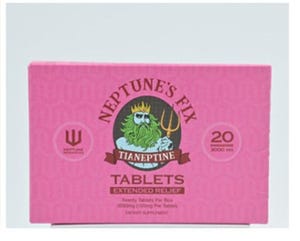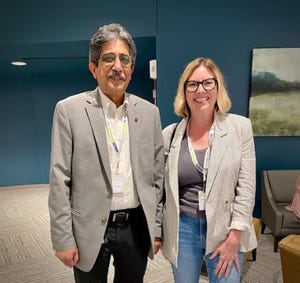Biggest change in omega-3 levels key to heart protection: long-term study
A study done on heart attack patients used a high dose of omega-3s for six months followed by six years of follow-up. The intervention prevented further heart episodes only in the group that improved their omega-3 tissue levels the most.

At a Glance
- Study looked at whether a high dose of omega-3s could help prevent further problems for heart attack patients.
- Overall, the six-month intervention did not decrease the number of later serious cardiac events.
- But the patients who had the biggest change in their Omega-3 Index did see a benefit.
Data from a large-scale, long-term study confirms that what’s important in omega-3s supplementation is the level of EPA and DHA that subjects achieve in their tissues, not necessarily how many supplements and what type they take.
The new research, published in the International Journal of Cardiology, was conducted using a pharmaceutical form of omega-3s marketed as Lovaza from pharma giant GSK. This is an 84% fish oil concentrate, delivering 465 mg EPA and 375 mg DHA in each 1-gram soft gel. The research dose was 4 capsules a day, meaning the subjects were taking daily doses of 1,865 mg EPA and 1,500 mg DHA.
The study population was made up of 358 adults who had suffered significant heart attacks. More than 70% of the cohort was made up of men. The average age was about 48 but ranged from a low of 32 to 64 years old.
The subjects were divided into two roughly equal groups, with one group taking the fish oil drug for six months and the other given a placebo. The subjects took the medication or placebo for six months while also receiving the standard care regimen that included diet and lifestyle modifications.
After the initial treatment phase, the patients were followed for a total of about six years.
Cardioprotective mechanism
The study design was meant to investigate whether a high dose of omega-3 fatty acids could lessen the risk of subsequent major adverse cardiac events (MACE) after the initial heart attacks. One of the mechanisms postulated for this purported protective effect is the previously shown ability of omega-3 supplementation to restrict the remodeling of the left heart ventricle after a serious myocardial infarction.
In a heart attack, part of the heart muscle is deprived of oxygen causing tissue damage and/or death. The muscle wall of the heart in that portion of the left ventricle is replaced with fibrous scar tissue. The rest of the ventricle responds by becoming more spherical, with thickened walls that feature large amounts of interstitial collagen fibers.
The performance of the heart is lessened with this remodeling and gets progressively worse as those changes in the conformation of the heart continue. The changes are associated with worse outcomes for patients who have already suffered a heart attack.
After the six years of follow up, the researchers reported that overall, there was no difference between the two groups in terms of MACE.
However, the researchers noted that those patients who achieved the greatest increase in their Omega-3 Index levels (a measure of EPA and DHA in red blood cell tissue) did experience a significant reduction in MACE over the follow-up period.
Levels, not dosages
For William S. Harris, head of the Fatty Acid Research Institute and one of the paper’s co-authors, the message is clear. The important thing is the level of omega-3 achieved in tissues, not the dosage or form of the supplement (or drug) used in the study.
After all, the first indication of the cardioprotective properties of high omega-3 levels came from population-based research comparing Greenlanders, who were eating a traditional diet that featured fat in the form of whale and seal blubber as well fatty fish, to Americans and Danes whose diets were similar in terms of overall fat content. The Greenlanders suffered heart disease at a fraction of the rate of the Danes and Americans. A key point, though, is that those Greenlanders had been eating a diet rich in omega-3s for their whole lives, not just six months.
“This follow-up study of post-MI patients who had been treated with 4 g/d of Lovaza for (only) 6 months after their heart attack found that, although having been assigned to omega-3, did not reduce risk for major adverse cardiac events (MACE) over the ensuing 6 years. [But] those patients who experienced a 5-unit increase in the Omega-3 Index during the treatment period were much less likely to have a MACE than those whose Index did not increase by 5 units,” Harris told Natural Products Insider.
“The take-home message from this study is that it is omega-3 levels – not taking omega-3 per se – that affords cardiac benefits. Physicians should make every effort to, first, measure the Omega-3 Index in their post-MI patients, but more importantly, to dose with EPA+DHA so as to achieve a 5-unit increase, e.g., going from 4% to 9% or more,” he added.
Read more about:
Supplement scienceAbout the Author(s)
You May Also Like






.png?width=800&auto=webp&quality=80&disable=upscale)